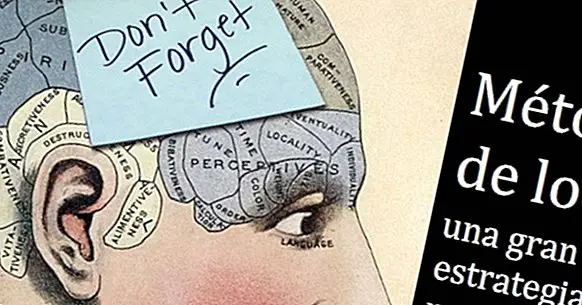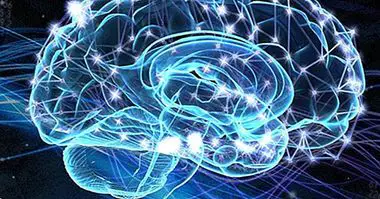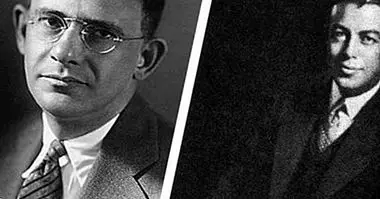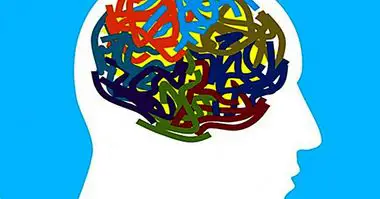The loci method, almost infallible to remember anything
Are there mnemonic techniques that allow us to memorize everything? Of course, the ability to process data from the human brain is limited, but that does not mean that, following the proper methodology and with a little patience, you can not use tricks to expand our memory to impressive limits.
If you have ever researched the subject, you will have realized that there are real specialists in exploiting the resources of your memory. Individuals who, having trained their minds day by day, manage to reproduce data with astonishing ease.
In this sense, the loci method is one of the most useful tools .
- Recommended article: "13 practical strategies to improve memory"
Memory based on the narration
Traditional education that is based on lectures (teachers speak, students are silent) has been based for years on the idea that human beings store memories as pieces of information that "enter" our brain one by one, separately.
Thus, in compulsory education classes it has been very common to see lessons in which the teacher recites the names of a series of rivers, names of kings or body parts, at best adding to this bombardment of data an element of musicality to facilitate memorization.
However, today there are many memory researchers and cognitive sciences in general that hold a radically different idea: that it is much easier for us to memorize things when we integrate them into a narrative , something that happens in a certain space and time. A way to understand memory that is based on the way in which people tended to remember things thousands of years ago.
The memory of oral tradition
Nowadays, writing and the ease of printing texts make almost everyone have an artificial "expansion" of their ability to remember things. Writing is, in practice, the possibility of creating memory deposits to which we can access relatively easily whenever we need to consult certain data. However, the fact that this tool is based on the existence of a certain degree of technology (writing, printing and computers) means that humanity has not always been able to enjoy this second memory composed of sheets of paper and computer systems.
However, many civilizations came to prosper and achieved a very detailed knowledge about the environment in which they lived, and even succeeded in creating laws, norms and systems of values and very complex beliefs that acted as a social cohesiveness. How was it possible for the members of these cultures to memorize this type of information without having constant access to the scriptures? Possibly, this was possible to oral tradition and mythology . What was to be memorized was explained in the form of a narrative, something that can be visualized and related to an environment that is easy to remember vividly.
What is the loci method?
The loci method It is a technique to facilitate memorization whose creation is attributed to the Greek poet Simónides de Ceos.
The term "loci", which in Latin means "place", gives a clue as to what this method is; it relates the pieces of information that you want to memorize with a three-dimensional environment that we can remember and evoke vividly. In this way, the loci method takes advantage of spatial memory to "expand" all our capacity to remember things in general.
Its habitual use does not make our spontaneous memorization better or that we remember many things that we have not even proposed to evoke later, but it is a tool that we can use deliberately at specific moments to accumulate a lot of information and not forget it (without the help of the writing). Thus, it can be used as an effective method of study: it allows us to retain much more information in order to be retrieved later.
Locating memories in a narrative plot either
The fact that following the loci method we introduce a notion of space to our memories makes it possible to create narrations that allow us to easily memorize what we want to remember. For example, if we want to memorize the main tasks that we have to do throughout the week we can create a vivid narrative in which all these elements are present. It does not matter if it is totally surreal and, in fact, the more fun it is the more hook it will have and the easier it will be for us to remember . The key is to evoke many details of the space or spaces in which the action takes place, taking into account all the sensations that each moment transmits: touch, smell, colors, etc.
In this way, each piece of information that we should remember will lead us spontaneously to the next: a crowd of people (representing the meeting that we must attend on Monday) chases us through the plaza of our city, and we hide from it in a cashier (representing the banking procedures that we have to carry out on Wednesday).
In short, the loci method may not allow us to enjoy a supernatural brain, but it is certainly useful in many contexts. Perhaps that is why it is used both by people who want to improve their work performance and by world champions of memorization.
- It may interest you: "The limits and failures of human memory"



















